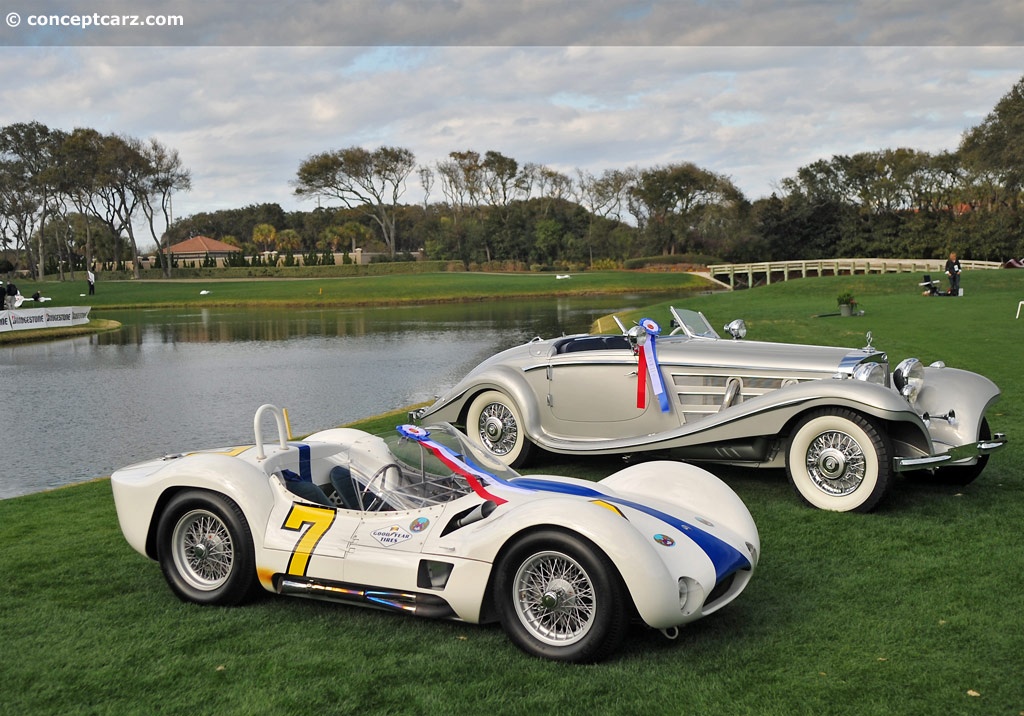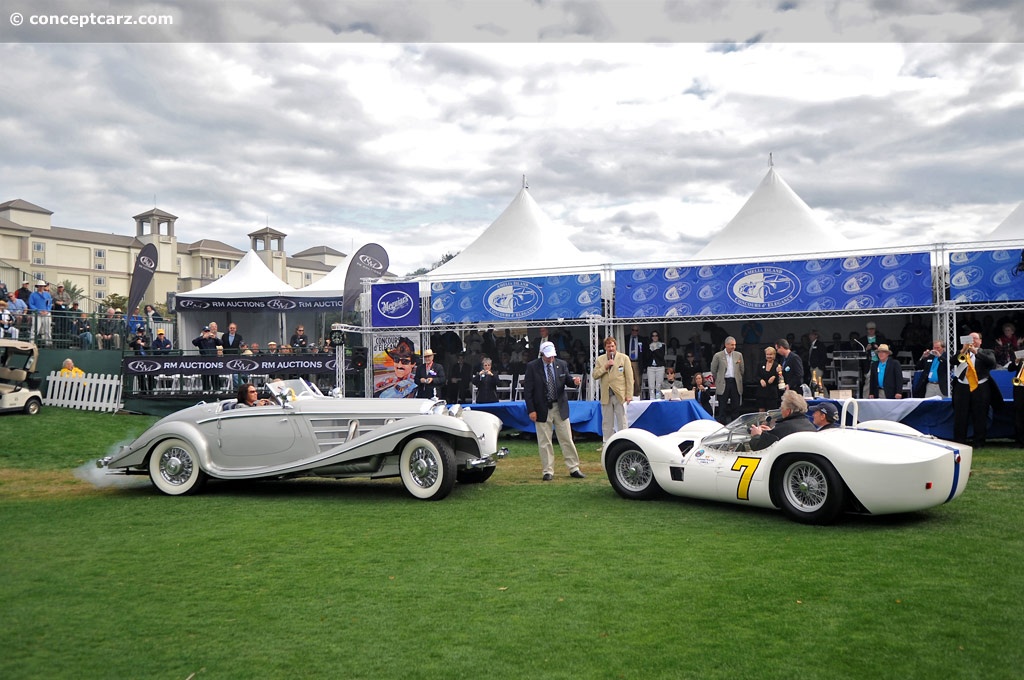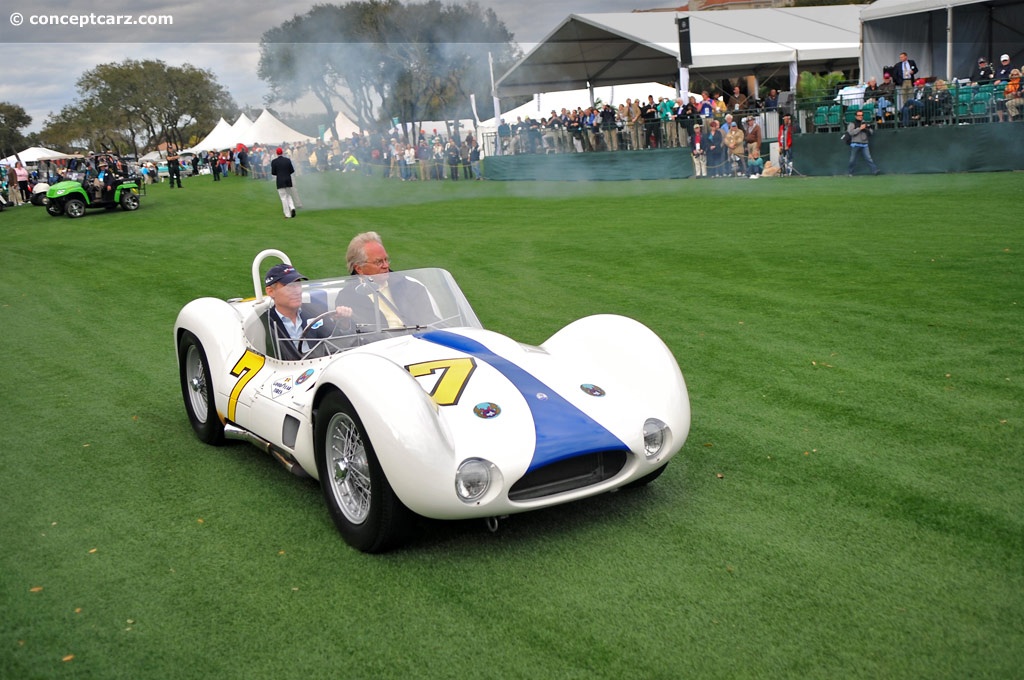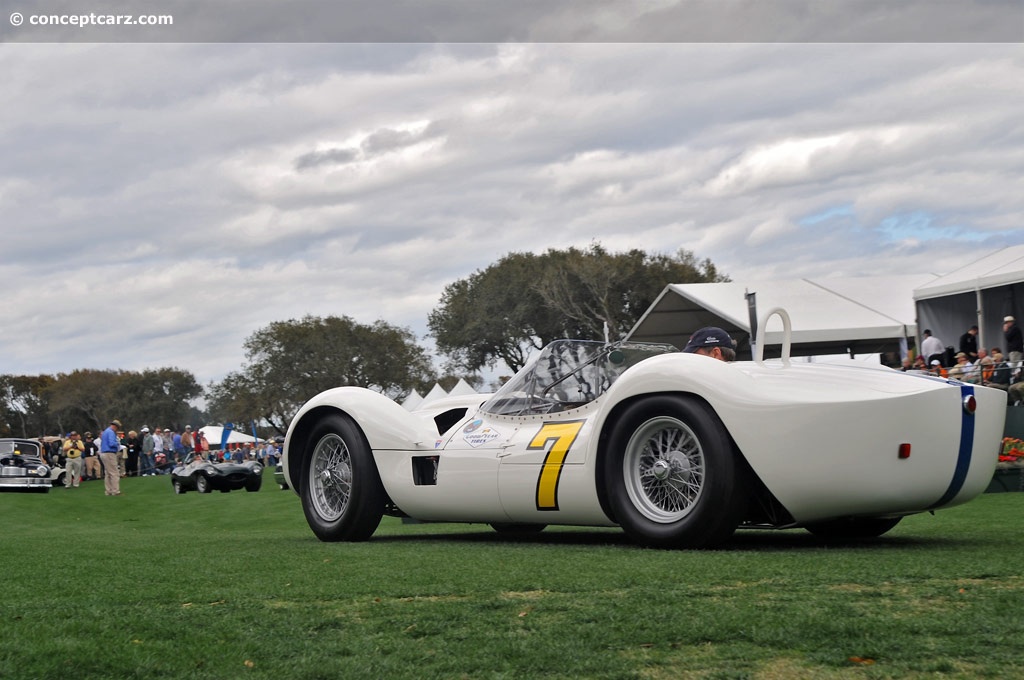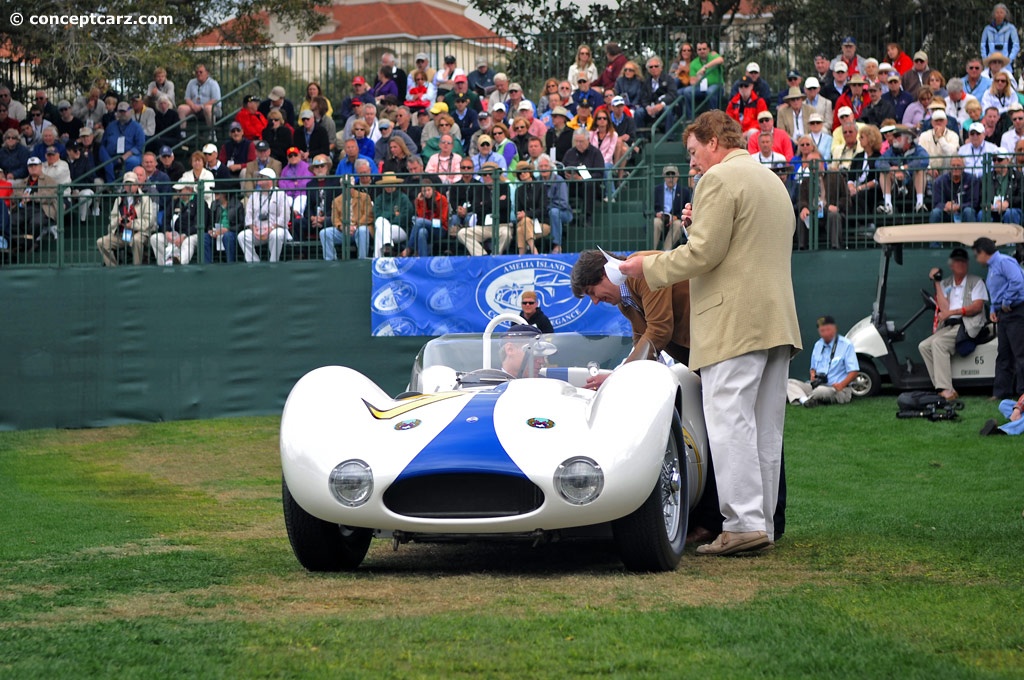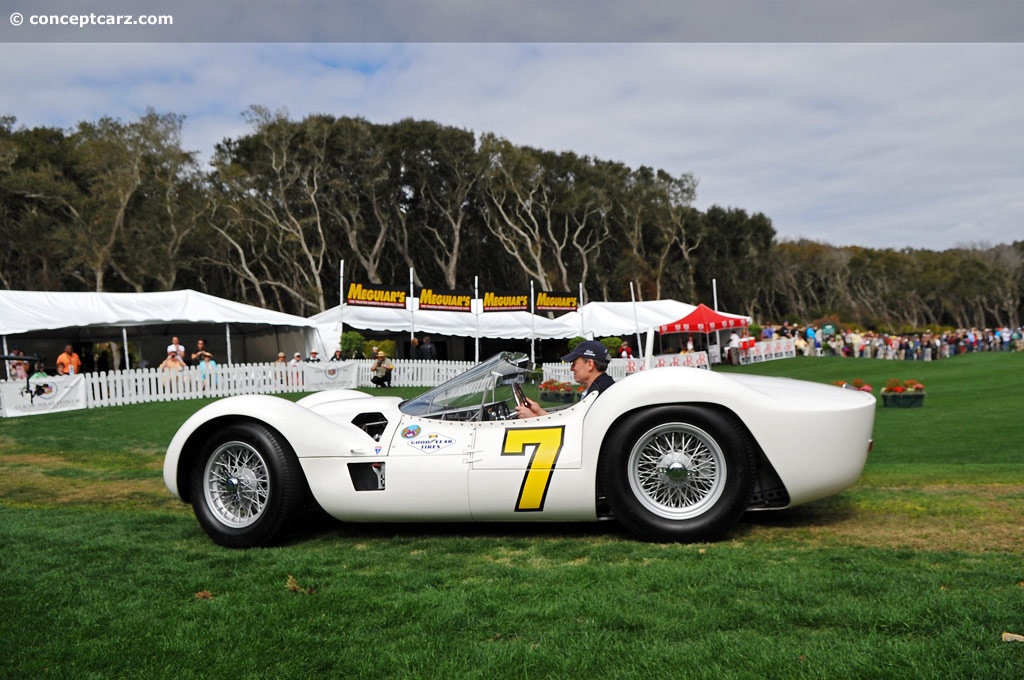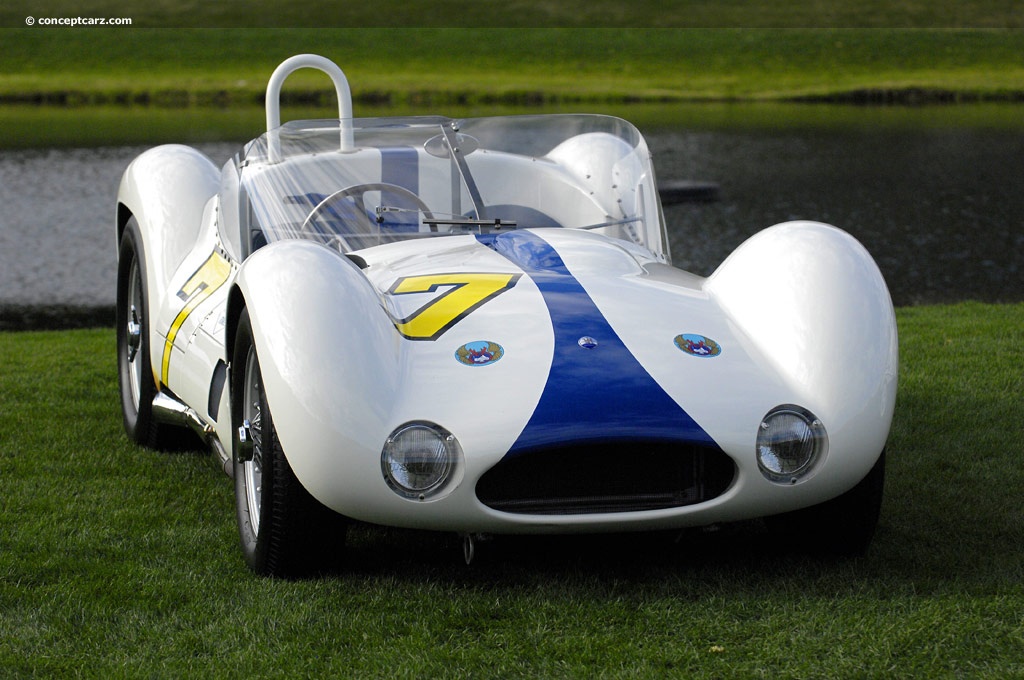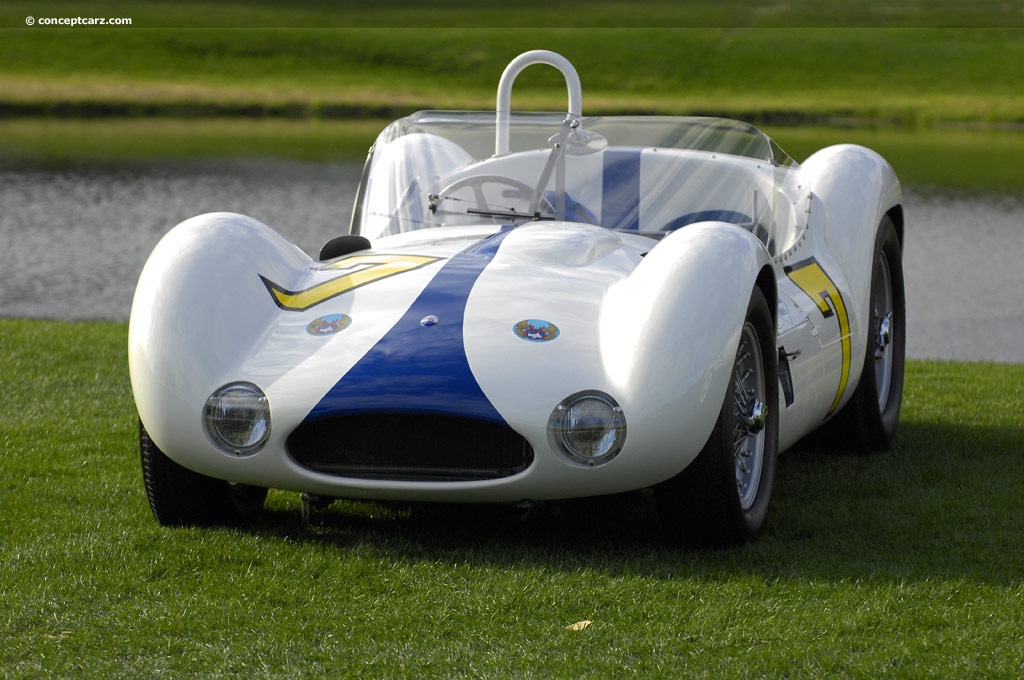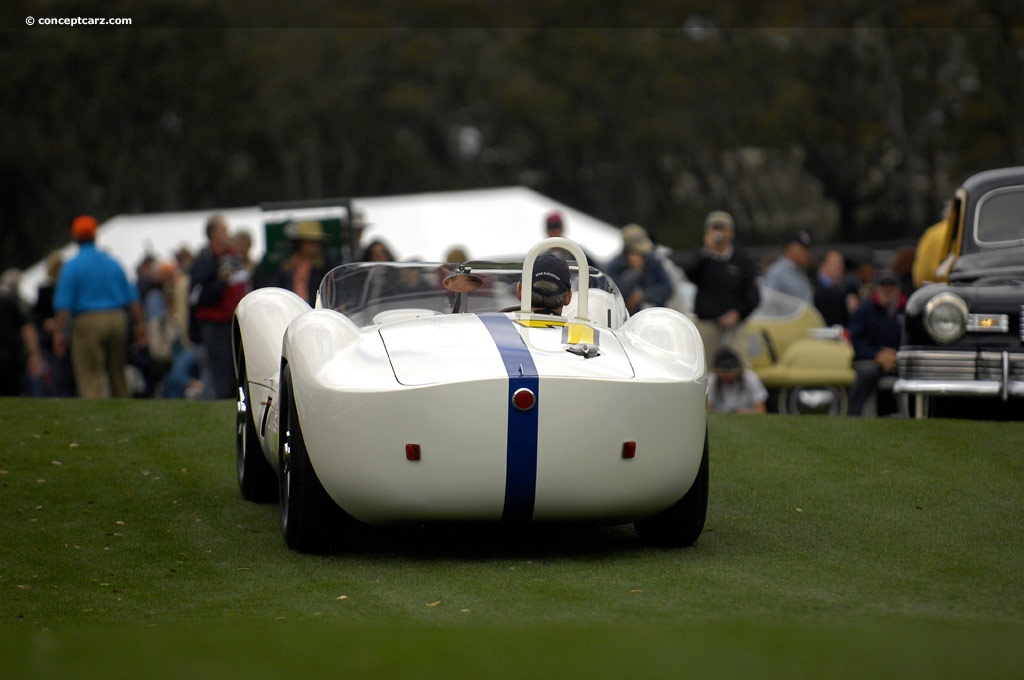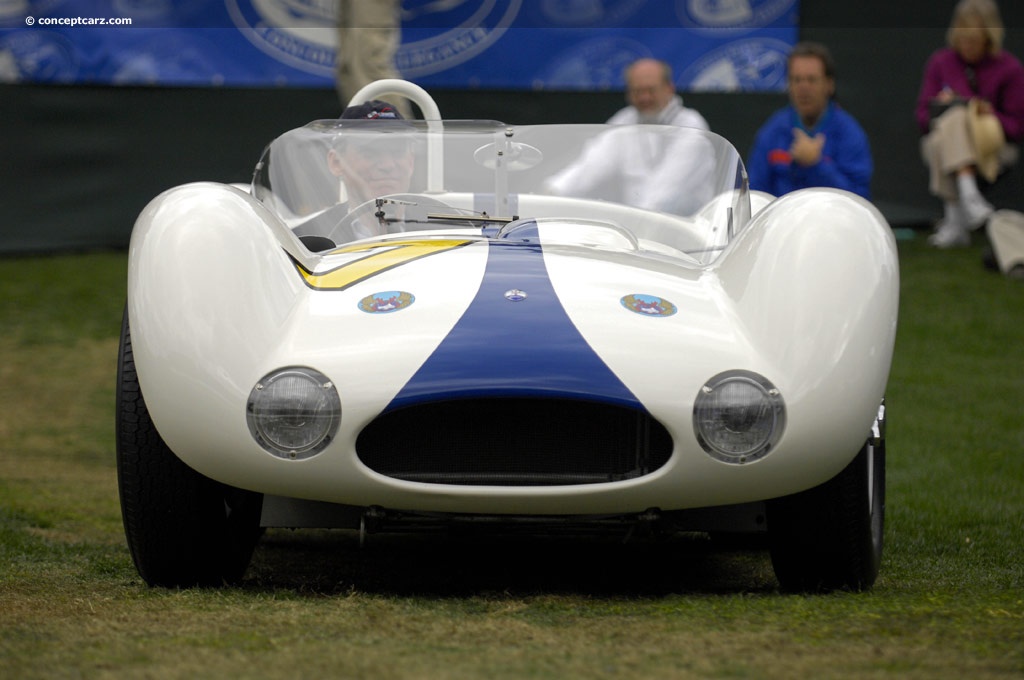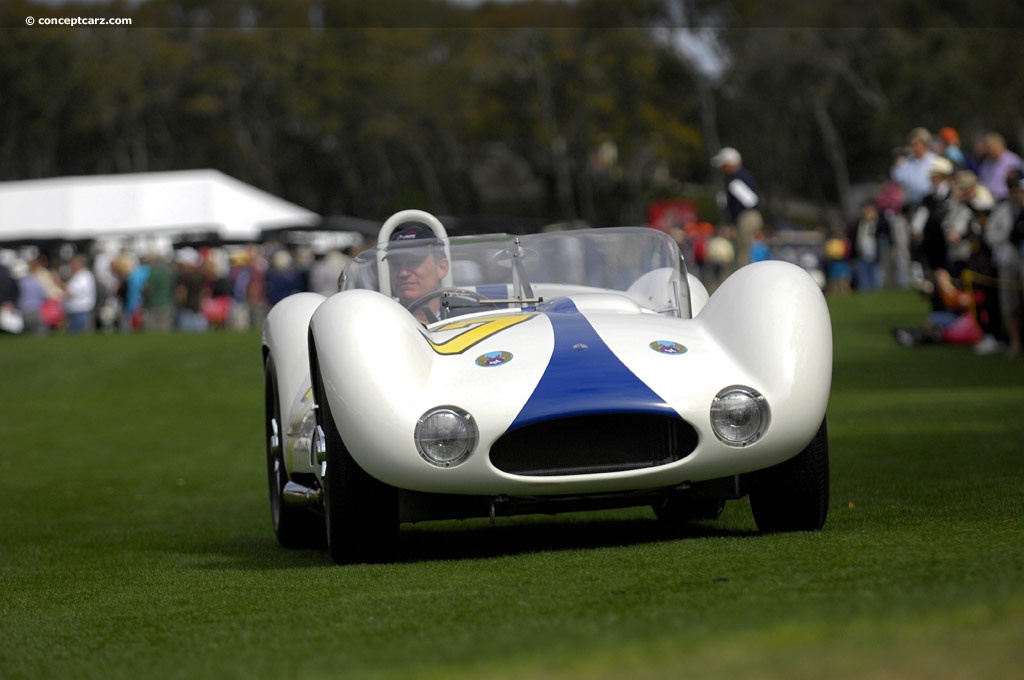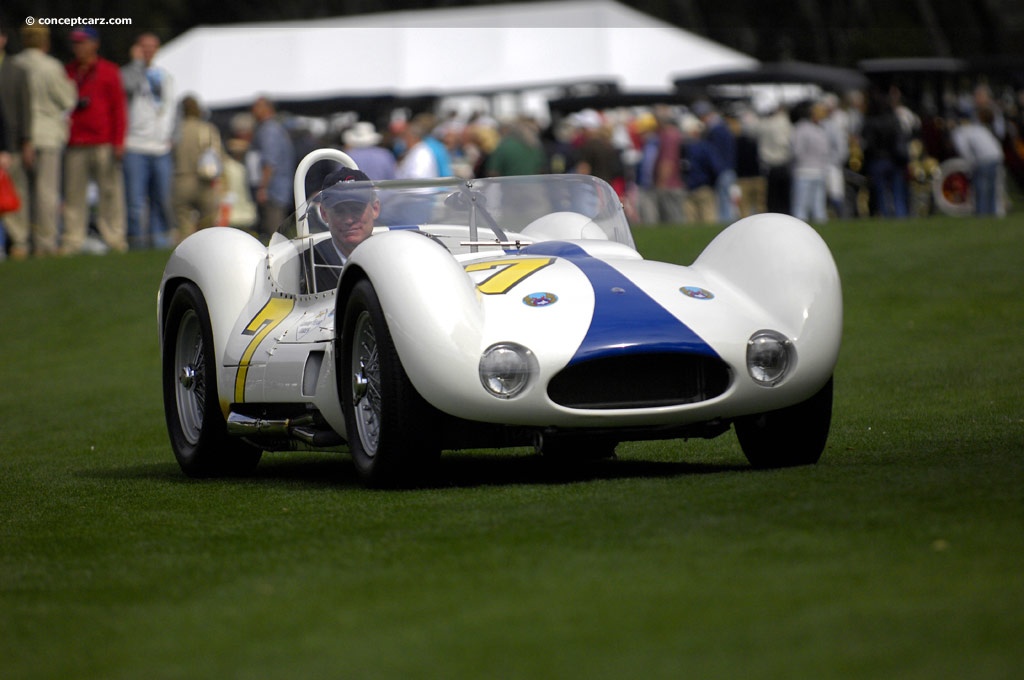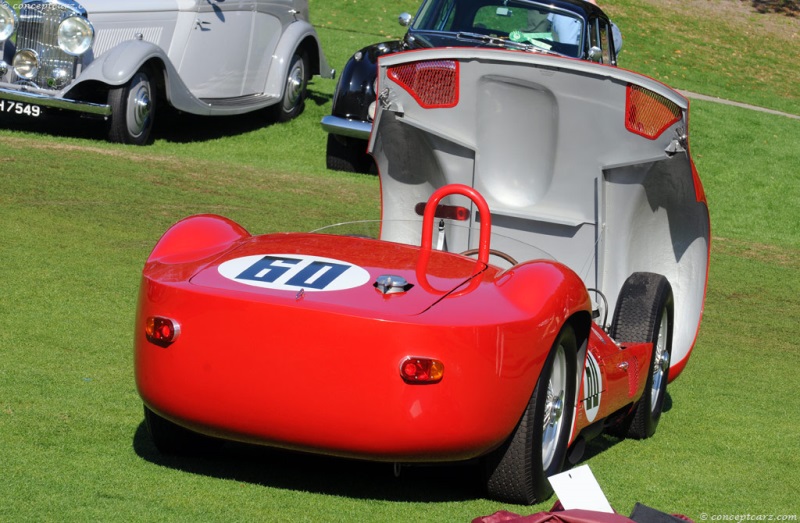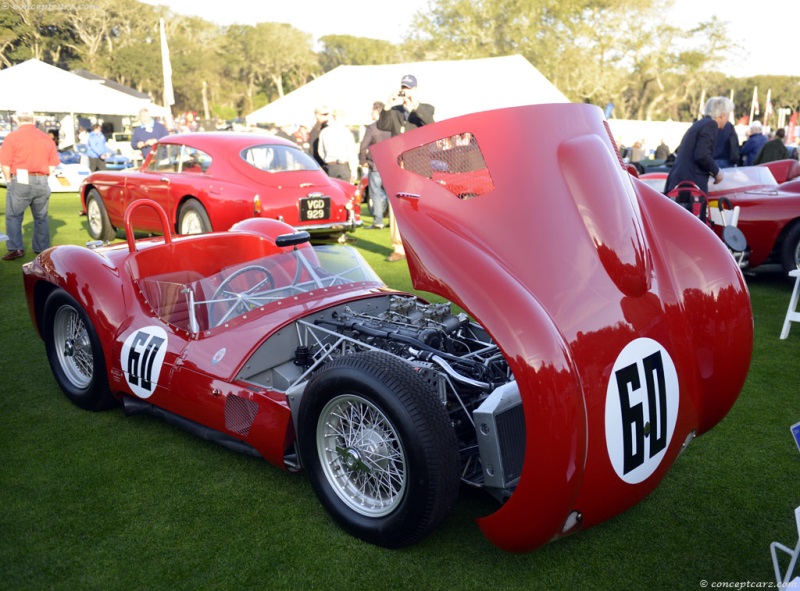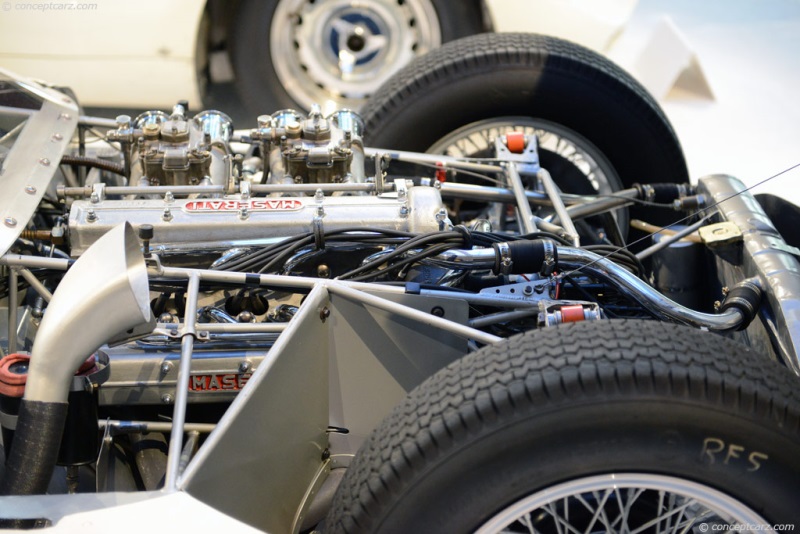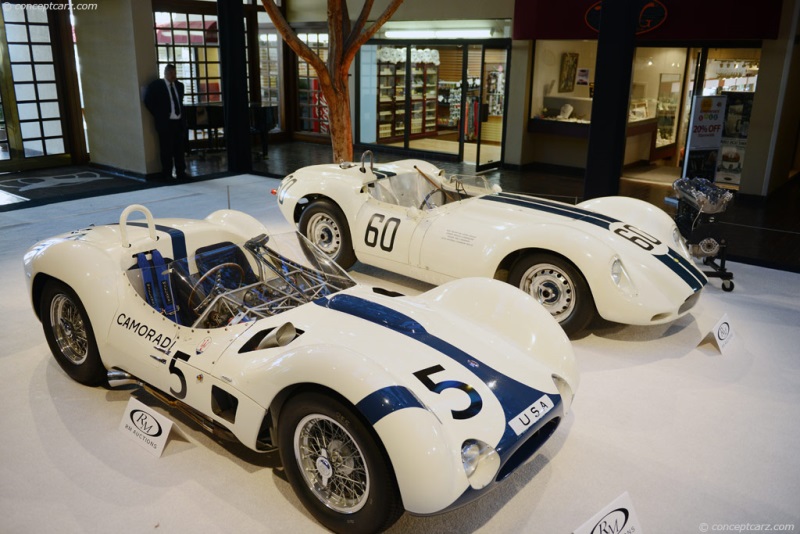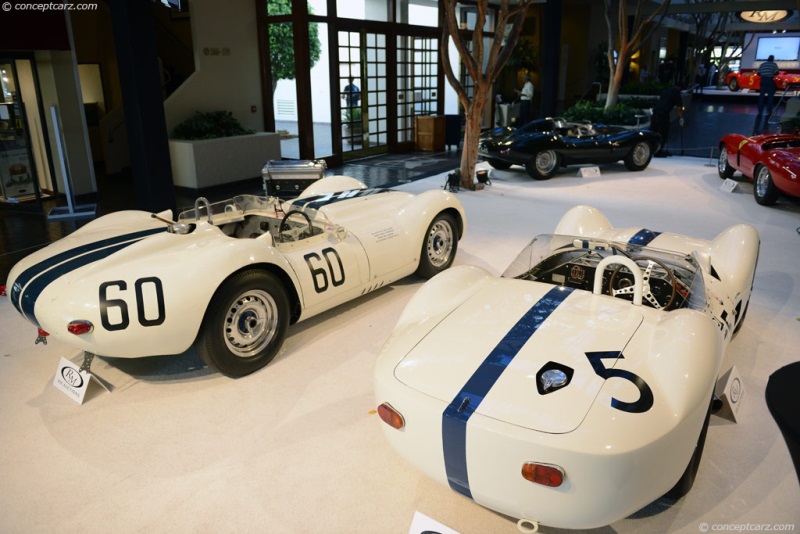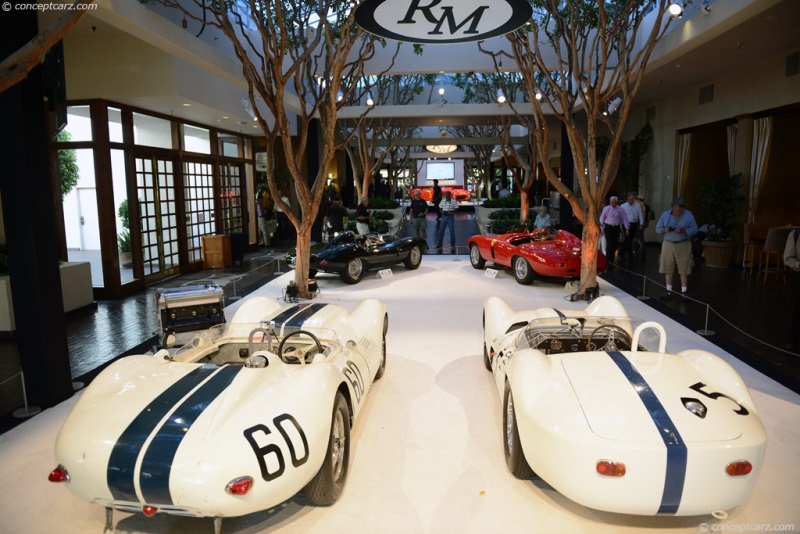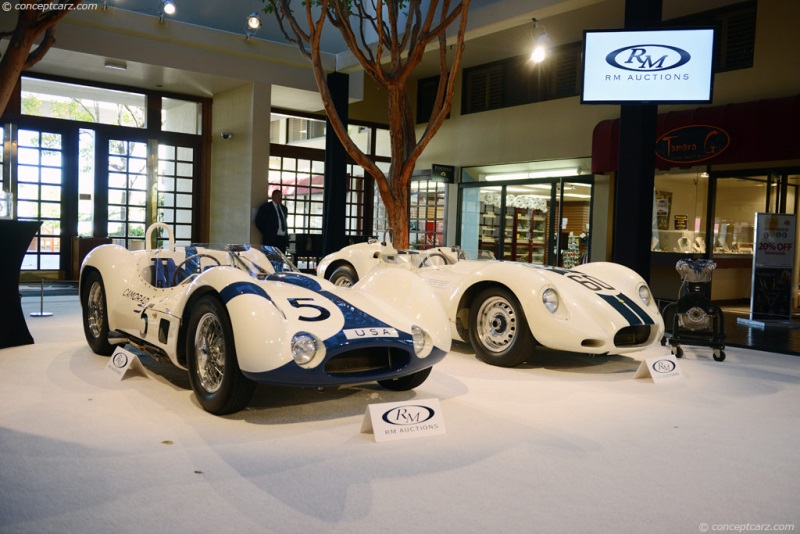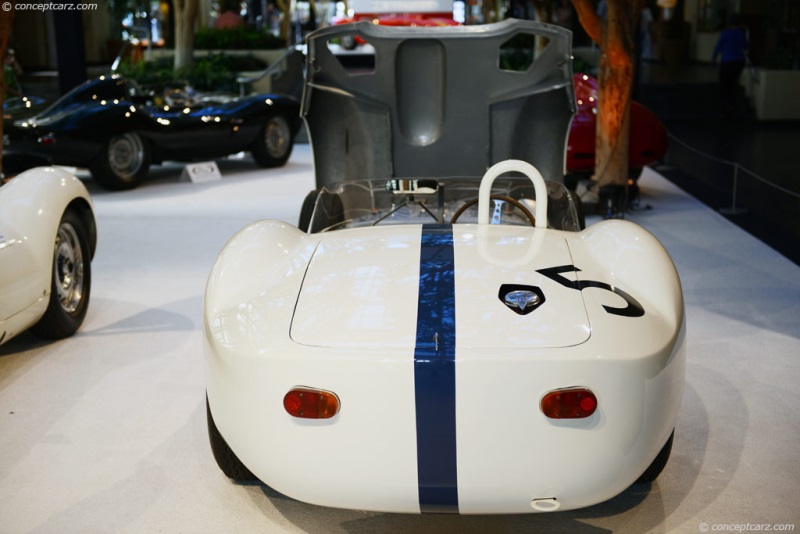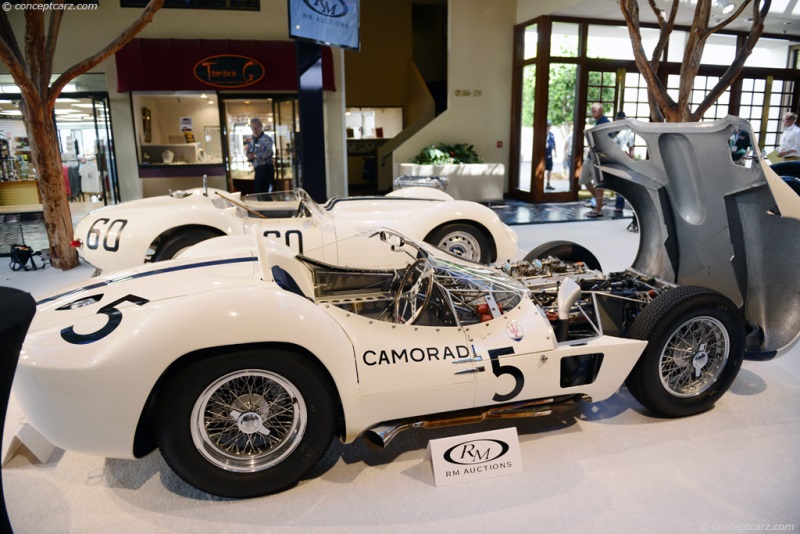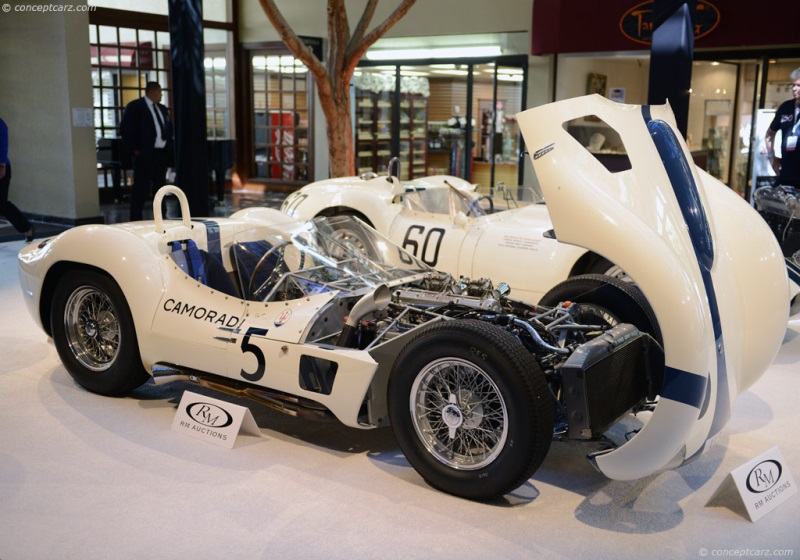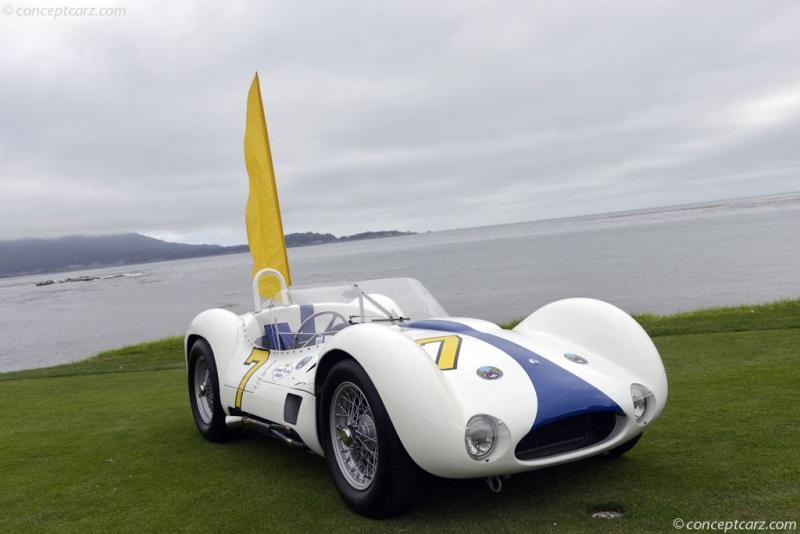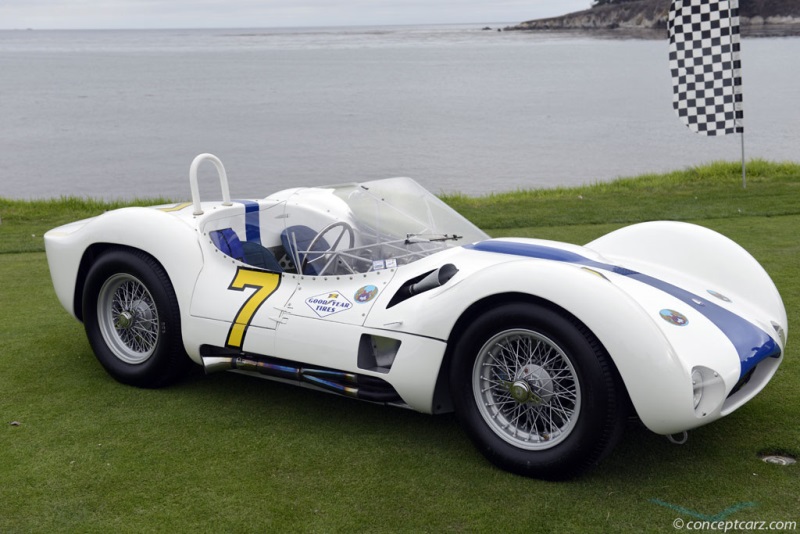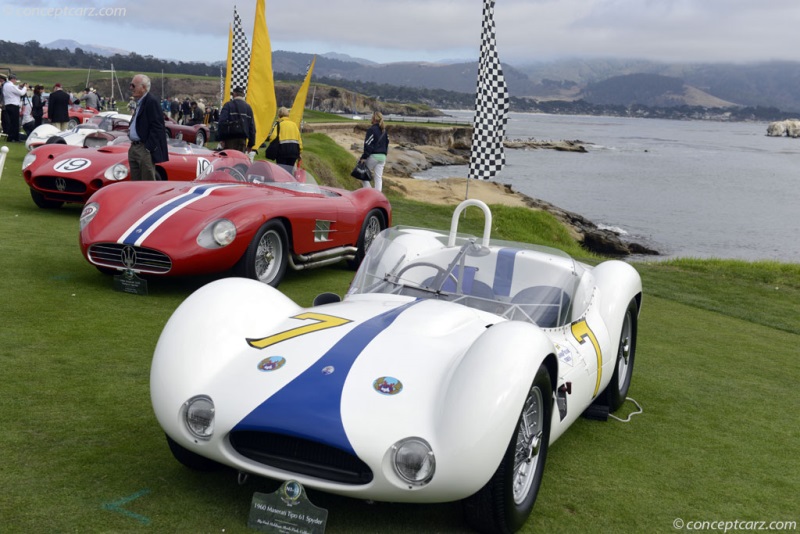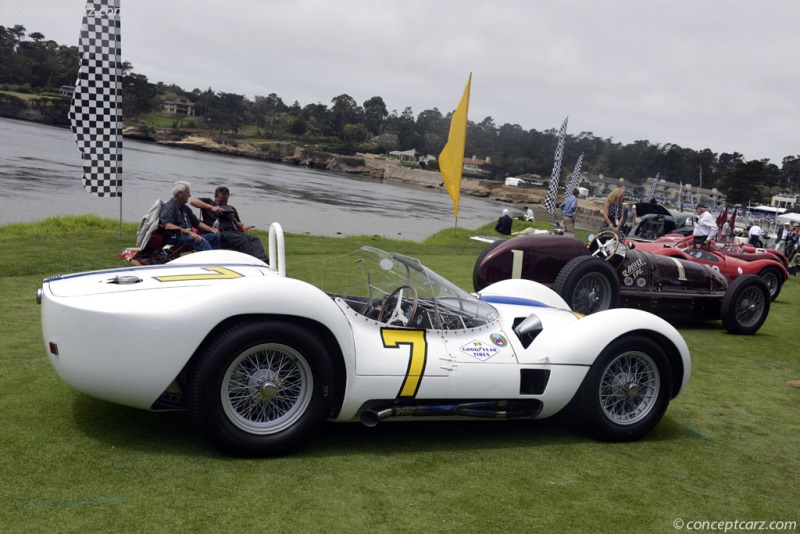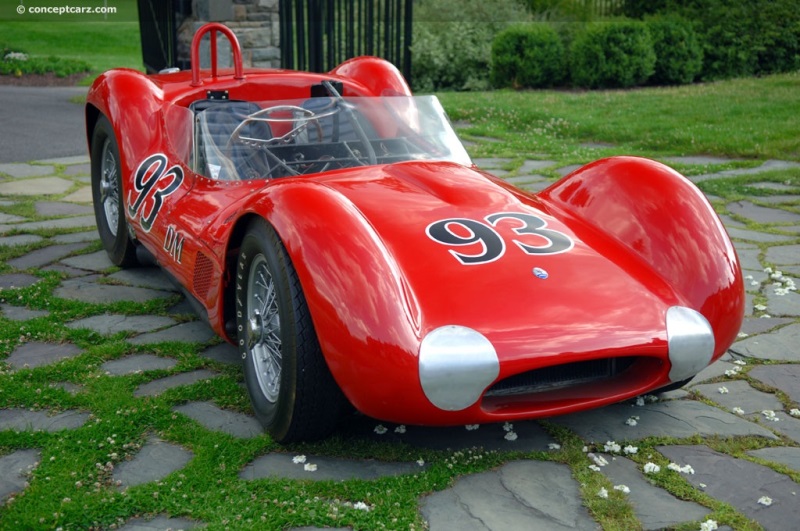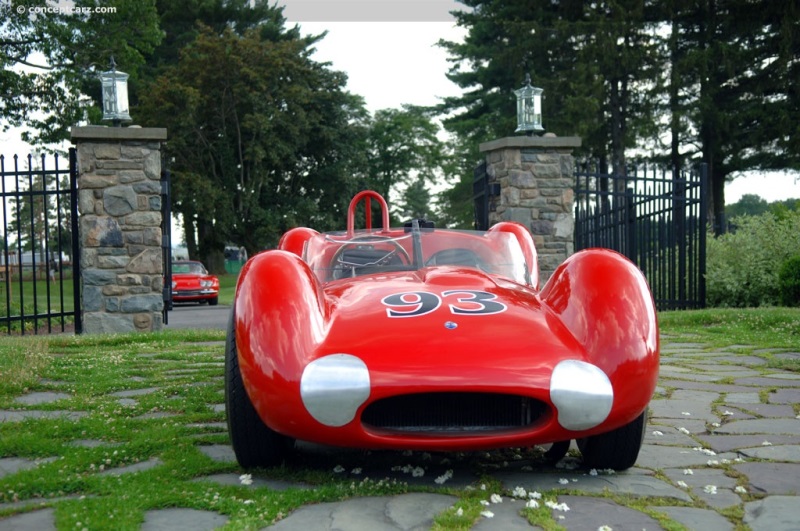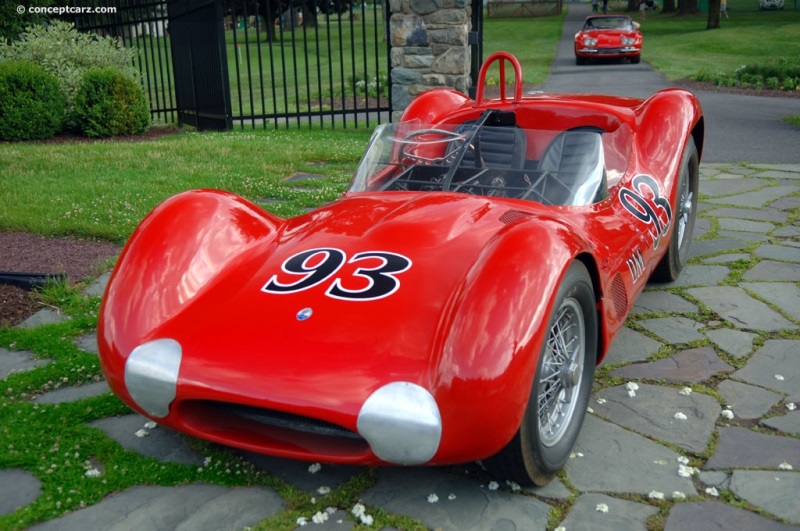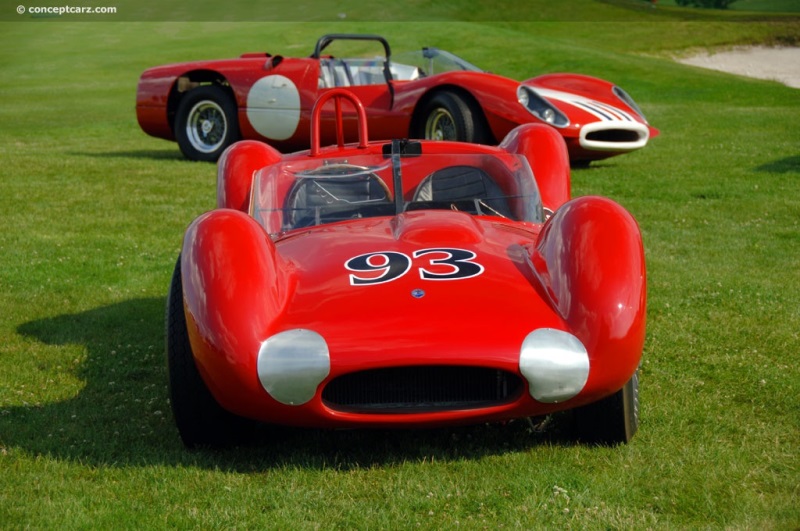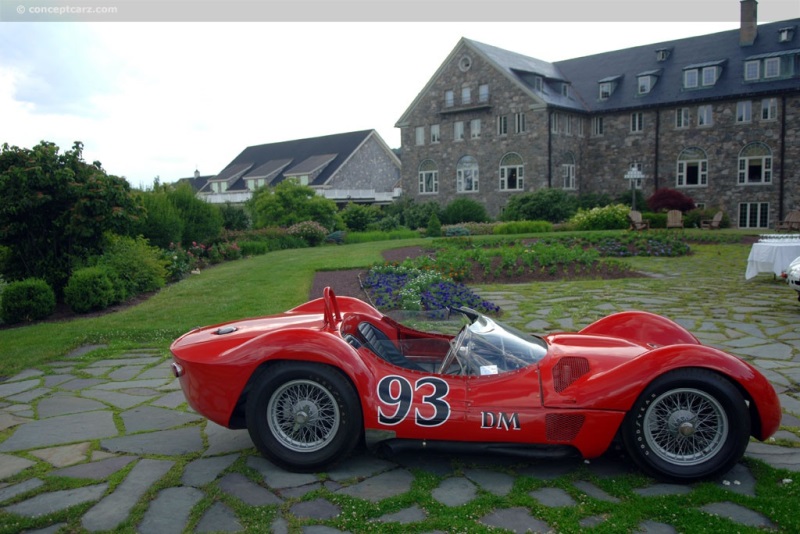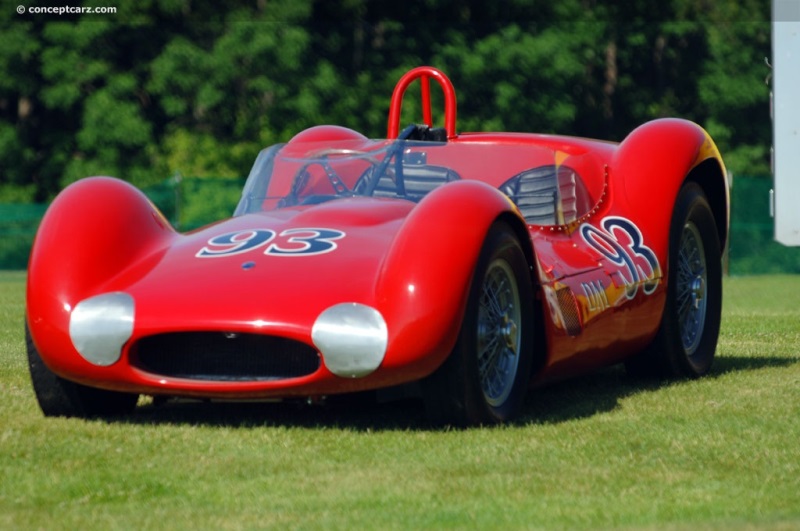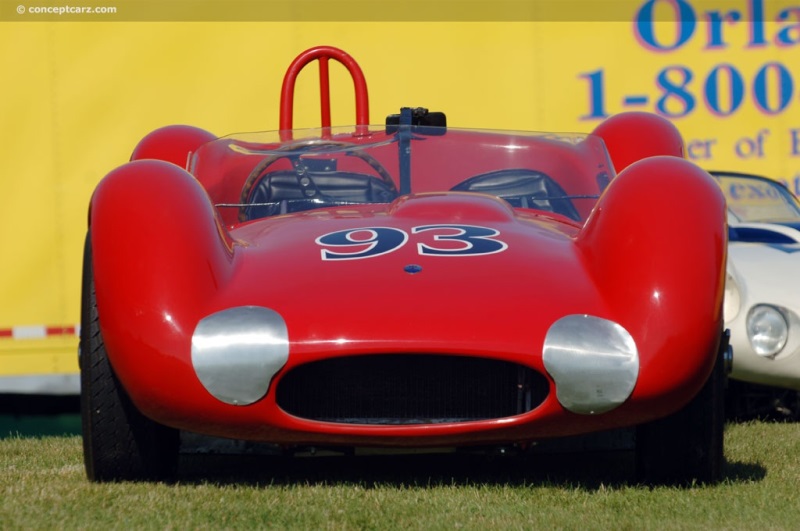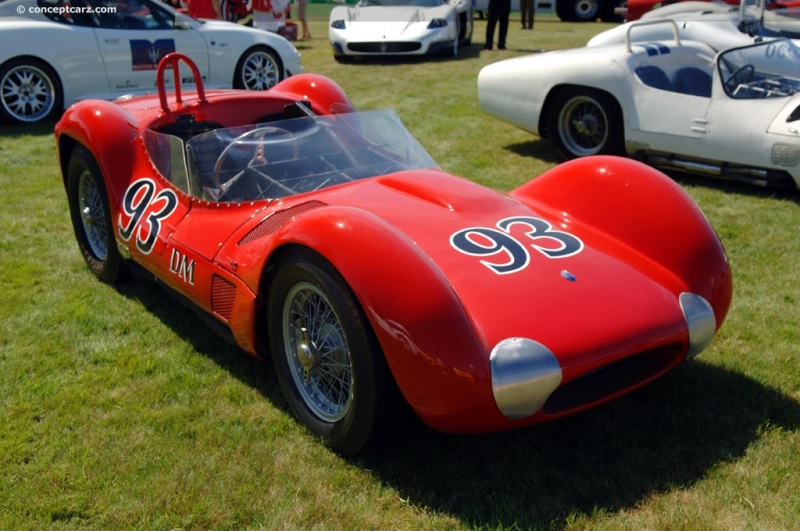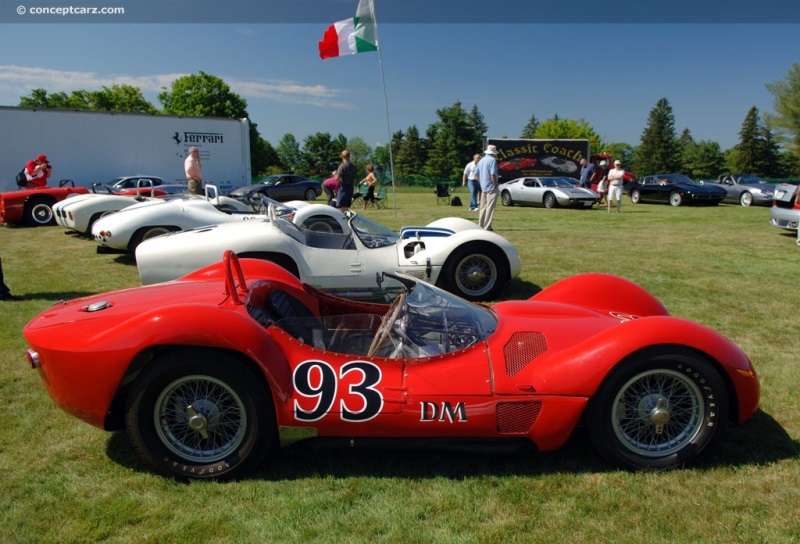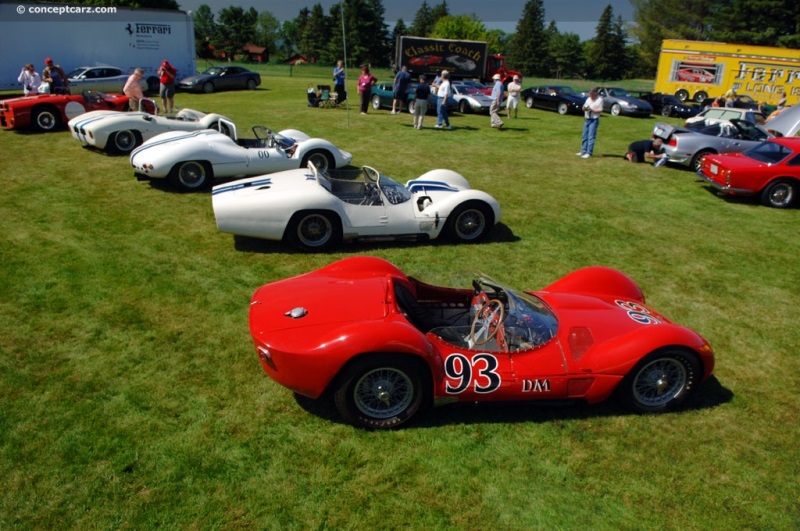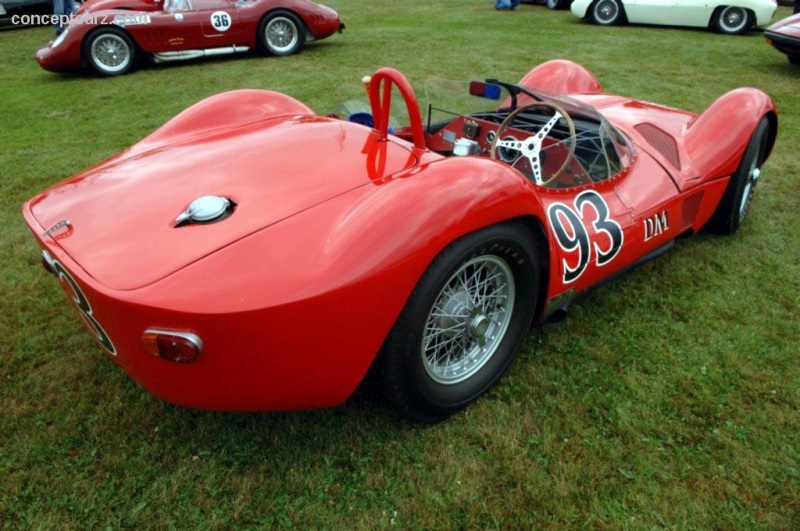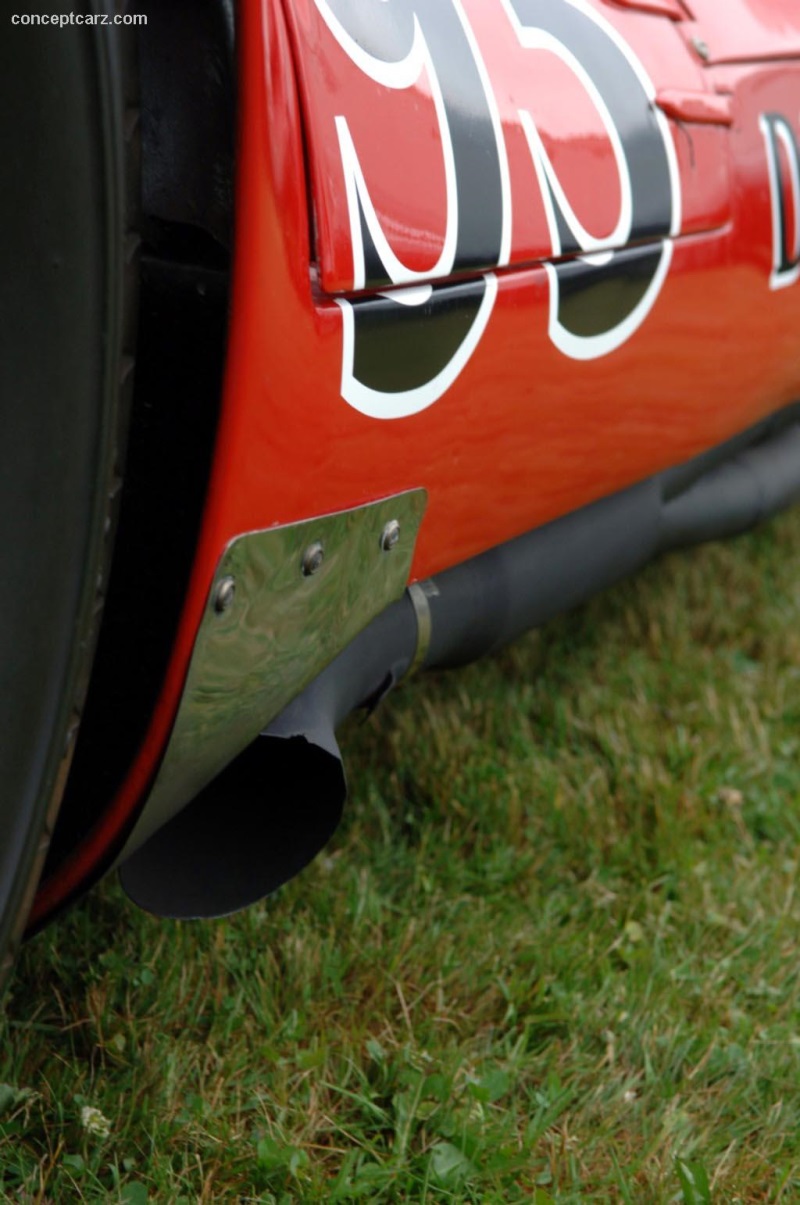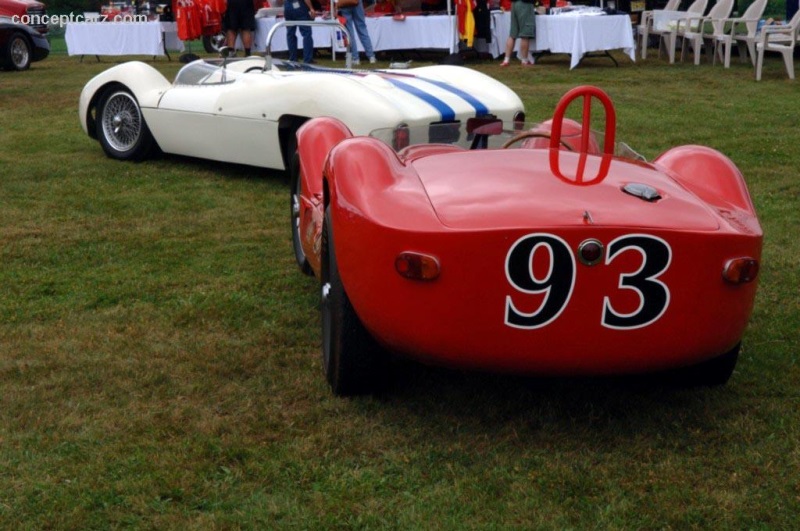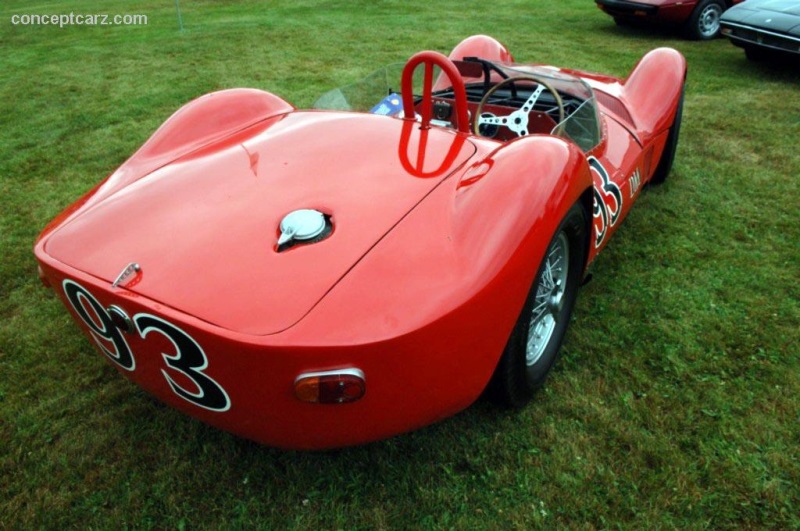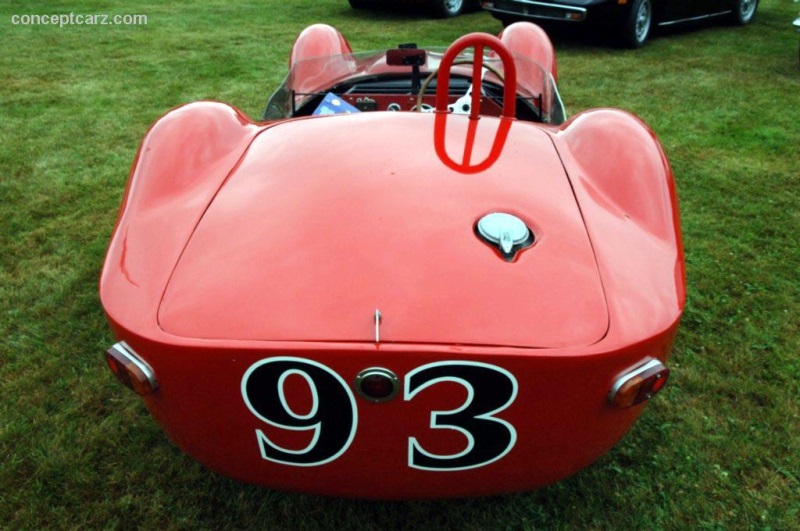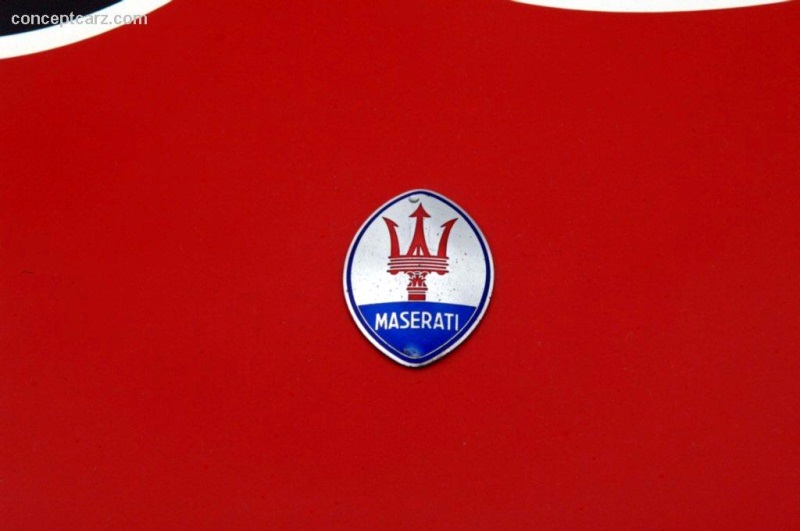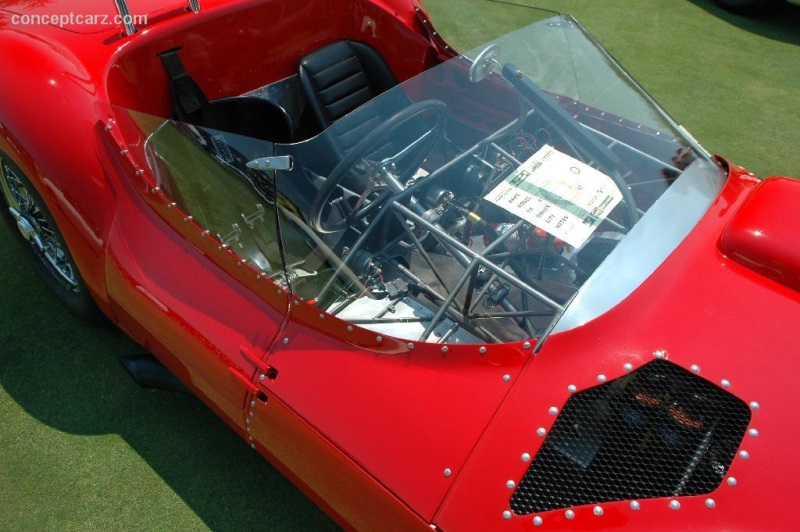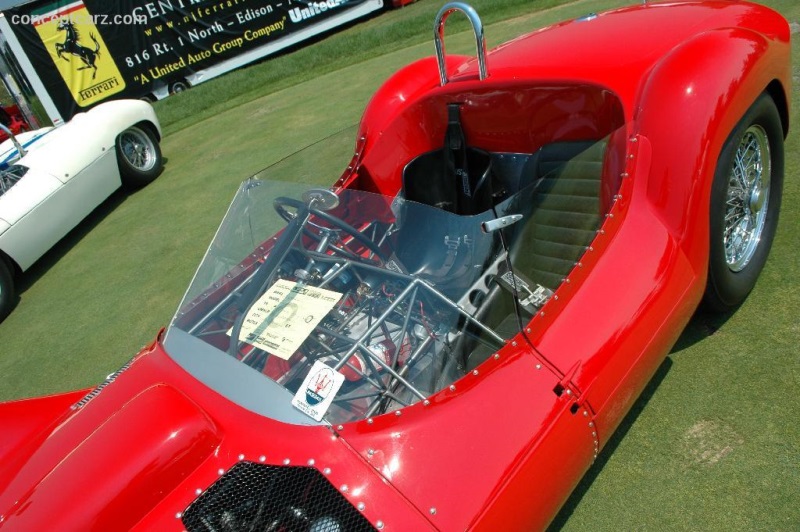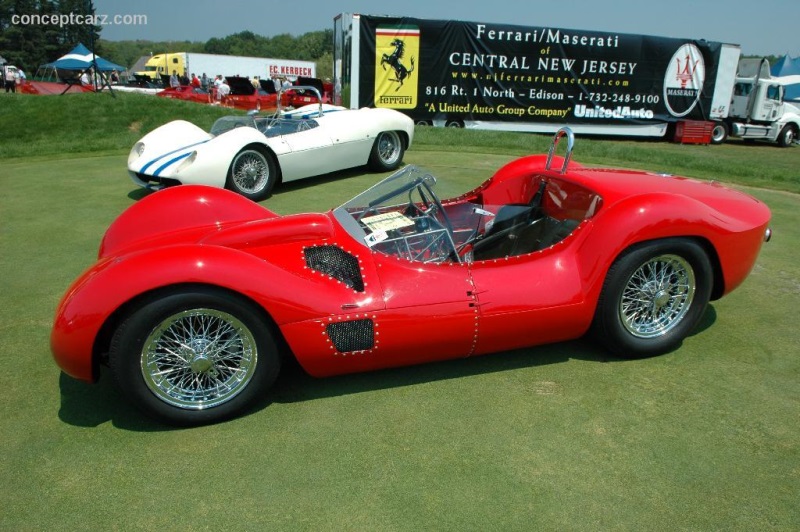On the track, the 1950s were a period of success for Maserati but it came at a cost – literally. The expense of competition development was difficult to reconcile with profitability. In 1957, the team withdrew from factory-sponsored motorsports, yet there was one final farewell for the Modena automaker, a fitting bookend on a stellar competition career.
Rather than focusing on engineering a brand-new engine, or building expensive V-12-based cars in high capacity, Maserati instead focused on the continued development of the two-liter four-cylinder unit from the 200S sports car. It was rather inexpensive to produce and it allowed Maserati to create a new sports car for their loyal clientele. The engine had a redesigned head in which the intake and exhaust ports switched places.
Maserati engineer Giulio Alfieri designed a new chassis with a lattice frame of small-diameter tubing (10 to 15mm), which was lightweight and rigid (weighted just under 70 pounds). The chassis was initially called the Type 60, later receiving the nickname the ‘Birdcage’ in reference to its tubed chassis. Voluptuous factory bodywork was mounted over the space-frame chassis by Alfieri, and the engine was installed at a 45-degree angle to lower height. Due to the engine angle, an all-new triangular sump was created. To help reduce weight front the front wheels, the five-speed gearbox was installed in-unit with the differential. The rear suspension was a deDion setup with transverse leaf springs, with the front being double-wishbones with coil springs.
In May of 1959, Stirling Moss was tasked with putting the car through its paces and performing a series of tests. The welds were unable to handle the rigid frame and began to crack. Alfieri’s solution was to replace the chrome steel with cheaper steel that would have more flex and bend.
The prototype Type 60 was chassis number 2451. Once again Stirling Moss was tasked with driving duties on its inaugural debut with factory sponsorship at the Coupe Delamare Debauteville on July 12, 1959, where he finished in 1st place overall. Experiments with larger displacement engines followed, resulting in the three-liter Tipo 61 cars, which began delivery to customers in November of 1959. At least one Tipo 60 example was eventually upgraded to Tipo 61 specification. A total of 22 total examples were produced between 1959 and early 1961. Customer deliveries of the T61s to the United States began in October of 1959 beginning with chassis number 2453, and shortly followed by 2455, driven by Gaston Andrey at the Governor’s Race at Nassau in the Bahamas on December 6th of 1959. That was the first opportunity for Lloyd Casner to witness the T61 (at this point, an owner of T60 chassis number 2451). Lloyd ‘Lucky’ Casner’s Camoradi team (the Casner Motor Racing Division (abbreviated as the Camoradi team)) would eventually account for no fewer than five Birdcage orders (including the factory prototype 2451 and 2458, 2461, and 2464)
Maserati introduced the Tipo 63 in 1961. It had the spaceframe chassis but with a much different configuration. The engine now rested behind the cockpit, and although mid-engine placement was becoming more common than the front-engine layout, the Tipo 63 did not perform as well. The earlier Tipo 60 and Tipo 61 had near-perfect weight distribution, which was not achieved with the Tipo 63.
